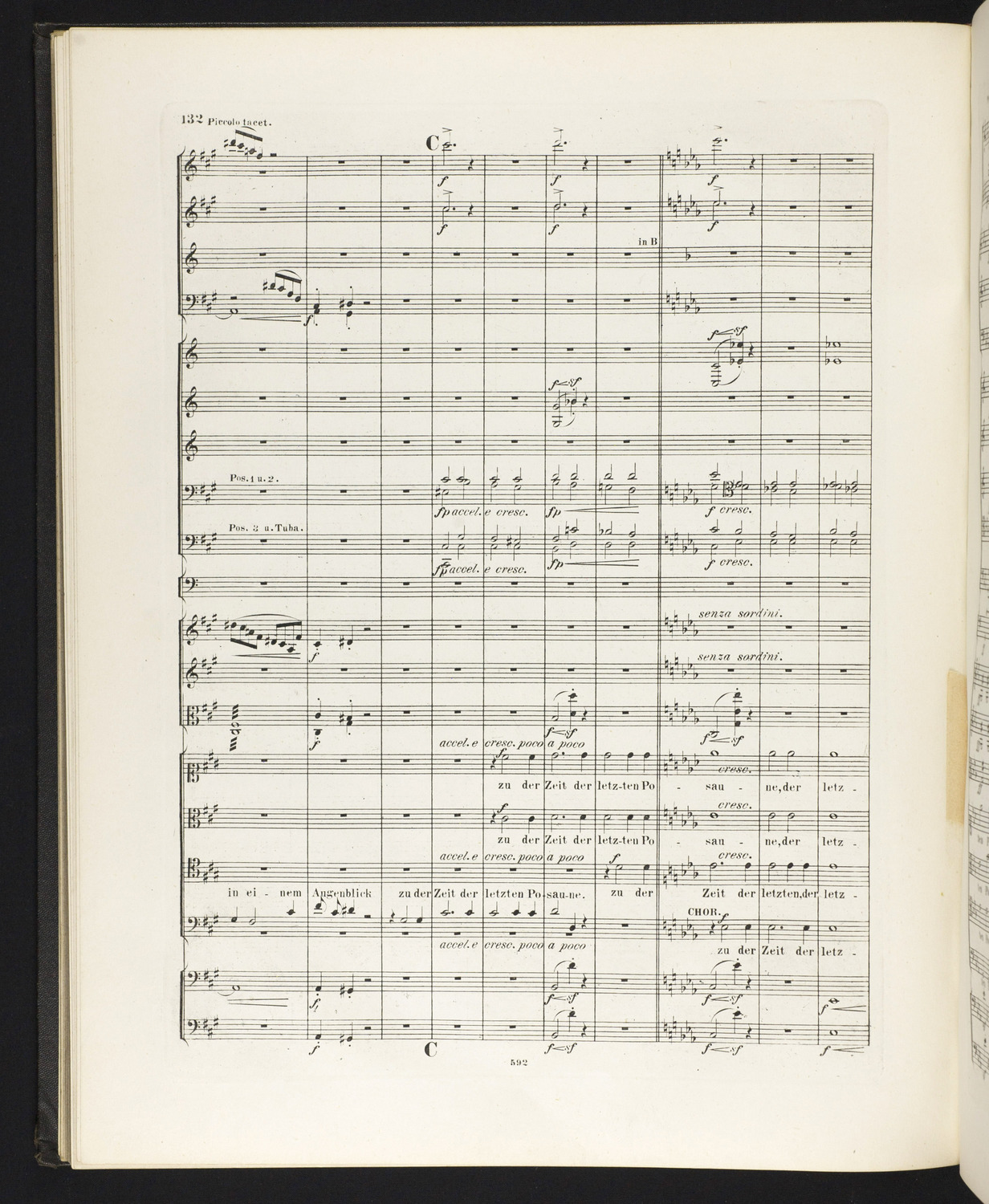Johannes Brahms—A German Requiem

Johannes Brahms. A German Requiem. Winterthur: J. Rieter-Biedermann, 1868. pp. 132-133.

Lilly Library M3.3.B83 R4 op. 45
Brahms intended his German Requiem to be a different type of work than Verdi’s more traditional Requiem. Rather than set the usual liturgical text, Brahms chose passages from the Bible that considered death from the viewpoint of those still living. First performed in 1868, the work can be considered humanity’s take on mortality. The text is in German.
The sixth movement of Brahms's German Requiem uses a similar textual source as Verdi’s Tuba Mirum; Brahms references a trumpet here. However, instead of using the instrument as a herald for judgment, dread, and terror, he treats it as a catalyst for change. Drawing from I Corinthians 15 and Revelation 4, Brahms focuses on the transformation that will occur to the faithful after the final trumpet. In the excerpt to the right, he reinforces this concept by drastically changing the character of the music, transitioning to a new key, texture, and dynamic level. Instead of death leading to judgment, Brahms points to a time when death will be defeated, a source of great hope. The excitement felt in this movement arises from triumph, not despair. This score is a first edition housed at the Lilly Library, published in 1868.
